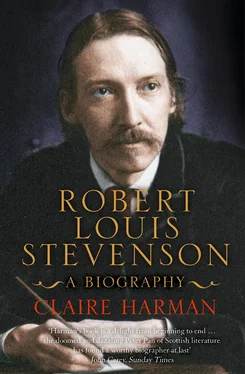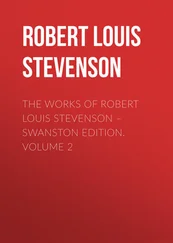Thomas’s hatred and fear of school were due to the teachers’ constant use of the cane, and he was to say that the sufferings he endured there were worse than any he experienced in later life. His survival strategy was based on maintaining a low profile, as this spirited incident, related by his son, shows:
He never seems to have worked for any class that he attended; and in Piper’s took a place about half-way between the first and last of a hundred and eighty boys. Yet his friends were among the duxes. He tells most admirably how he once on a chance question got to the top of the class among all his friends; and how they kept him there for several days by liberal prompting and other obvious devices, until at last he himself wearied of the fierce light that beat upon the upper benches. ‘It won’t do,’ he said. ‘Goodbye.’ 16
Thomas, like his son, was a dreamy, quirky child with a strong vein of the perverse: ‘there was always a remarkable inconsequence, an unconscious spice of the true Satanic, rebel nature, in the boy. Whatever he played with was the reverse of what he was formally supposed to be engaged in learning. As soon as he went, for instance, to a class of chemistry, there were no more experiments made by him. The thing then ceased to be a pleasure, and became an irking drudgery.’ 17 It was not the temperament to mould easily to Robert Stevenson’s expectations. Thomas worked for a short time in a printing office and toyed with the idea of becoming a bookseller or publisher – a practical slant to his deeper ambition, which was to be a writer. But his father was furious at this notion and before he was out of his teens Thomas had succumbed to the family fate of engineering, joining his two older brothers.
Alan, the eldest of the boys, had also needed some coercion to become an engineer. He was the scholar and polymath of the family, and wanted to study Classics and enter the Church. He turned out to be an outstanding engineer, making important improvements in optics and designing and building several lights, including the family’s most beautiful lighthouse, Skerry Vohr, on that dismal Atlantic reef surveyed by his father and Scott in 1814. Skerry Vohr proved a challenge as great as Bell Rock, though Alan was not the man to brag about it. He took over when his father retired from the post of chief engineer in 1842, but found the burden of work intolerable and in 1852, when he was forty-five, suffered a ‘sudden shattering of his nervous system’ which forced him ‘to withdraw absolutely from his profession and the world’. The few remarks about this collapse in an anonymous but highly sympathetic obituary notice indicate a family tragedy of large proportions:
What a trial this must have been to one of his keen, intrepid temper, his high enthusiasm, and his delight in the full exercise of his powers, no one but himself and those who never left him for these long dreary years can ever tell – when his mind, his will, his affections survived, as it were, the organ through which they were wont to act – like one whose harp is all unstrung, and who has the misery to know it can do his bidding no more. 18
The collapse happened when Alan had been married only six years and had four tiny children, two of whom, Katharine and the brilliant, mercurial Bob, were to be Robert Louis Stevenson’s close friends in adult life. All through their childhoods their father was a nervous invalid, who beguiled his ‘great sufferings’ by reading, learning languages, committing Homer to memory, and making a verse translation of the hymns of Synesius. ‘During many an hour the employment helped to soothe my pain,’ Alan wrote pathetically in the prologue to his privately printed translation. It was a startling example of how violently a sensitive nature could be shipwrecked by mental breakdown.
Thomas Stevenson was not as brilliant as his brother Alan, nor as versatile as his brother David, with whom he ended up running the family business. With his robust, serious, four-square face and figure, he looked every inch the Victorian paterfamilias, but there was instability at the centre of his character too: volatile, charming and puzzling, a straight-faced joker, he must have been a difficult man to have as father. In his obituary tribute, remarkable for its air of objectivity, his son characterised him as ‘a man of a somewhat antique strain’:
with a blended sternness and softness that was wholly Scottish and at first somewhat bewildering; with a profound essential melancholy of disposition and (what often accompanies it) the most humorous geniality in company; shrewd and childish; passionately attached, passionately prejudiced; a man of many extremes, many faults of temper, and no very stable foothold for himself among life’s troubles. 19
Thomas was a staunch Tory and devout churchgoer, with a strong belief in ultimate salvation – not through any merits of his own, but through God’s infinite mercy. There was not a shred of complacency in his view of himself. In the speech he wrote to be read at his own funeral, he expressed the hope that he would not be ‘disowned by Him when the last trumpet shall sound’, a characteristically negative construction, and among the Bible verses to be read he chose ‘Who can bring a clean thing out of an unclean? Not one.’ 20 Over a lifetime’s constant service to the Kirk, he never accepted any sort of lay office, on grounds of a seemingly inexpungeable ‘unworthiness’.
Melancholic by nature, Thomas Stevenson’s awareness of his own sins seems morbid; like his son’s creation Dr Henry Jekyll, he had perhaps an over-fine conscience about his shortcomings, shown in the story as a mark of extreme moral vanity: ‘many a man would have even blazoned such irregularities as I was guilty of’. 21 Sex seems to have been the focus of Thomas’s neuroses, as he held views so strong about the protection of women as to amount to a blanket condemnation of men. He believed, for instance, that any woman who wanted a divorce should be granted one automatically, whereas no man should ever have one. He also, intriguingly, set up a Magdalen Mission in Edinburgh for ‘fallen women’, which he supported financially all his adult life. Was this a gesture of general philanthropy or some private effort at atonement for real or imagined crimes against women – his own, or those of his sex in general? Thomas’s interpretation of chivalry did not lie anywhere on the usual axis between protectiveness towards women and the will to dominate them, but had a neurotic, slightly masochistic edge. It was taken on almost wholesale by his son.
In the autumn of 1847 this rather troubled man, then twenty-nine years old, was on a train to Glasgow when he met a young woman travelling with her uncle and aunt and got into conversation. Margaret Isabella Balfour was eighteen, cheerful, unaffected and a daughter of the manse. Thomas must have been looking out for a wife, for their first meeting was followed promptly by a brief formal courtship and a proposal; not the behaviour of an indecisive lover. On the brink of being thirty, Thomas was old enough to have had a considerable history of dealings with women, or a long-drawn-out history of wanting to have dealings with them.
Margaret came from genteel, Lowland stock and was the youngest surviving child of a family of thirteen, nine of whom had outlived infancy. Among her forebears were the Lairds of Pilrig and, possibly, the John Balfour who in 1656 was one of the religious zealots who murdered Archbishop Sharp. That notorious incident in the history of the ‘Covenanters’ (which became such an obsessive interest of her son Louis) formed part of Scott’s Tale of Old Mortality in which John Balfour appears as ‘Balfour of Burley’; so when Stevenson said that his father’s family played ‘the character parts in the Waverley Novels’ he might have added that his mother’s family appeared in the leading roles.
Читать дальше












